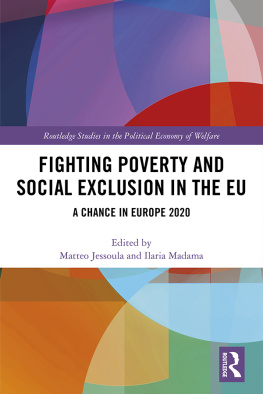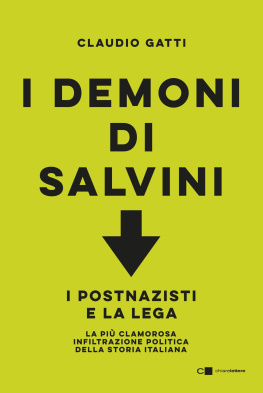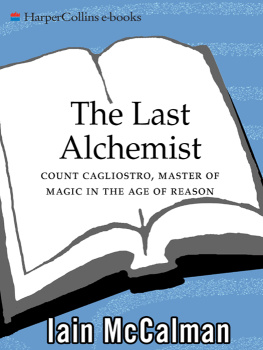Description
Matteo Salvini is one of the most controversial up-and-coming figures on the European political scene. Since 2013 he has been the leader of Italian Lega - formerly a secessionist party which he himself transformed into the champion of the new nationalist right, a pendulum between Putin and Trump. In 2018 he became both the Vice-Prime Minister and the Minister of the Interior in a coalition government with the populist Five Star Movement.
Accused of racism, Salvini has built his success on the social disorientation created by globalization and on the fear of immigration, using an aggressive and irreverent media campaign. But its also thanks to his political ability, developed during his long militancy in the party, which began when he was 17 years old, that he was able to recognize before others the new spirit of the times. According to most people, after the election in 2018, Salvini had in reality become the leader of Italian politics, with the goal of heading the nationalist front in Brussels after the European elections in May of 2019, and then, the next Italian government. This book is a map that seeks to answer one simple question: who is Matteo Salvini, really?
***
Alessandro Franzi is a journalist. He has written about politics for the agency Ansa in Milan and currently works in the Rai newsroom in Trento. Since 2004 he has focused his attention on the Lega Nord and the eurosceptic movements. Born in 1981 in Varese, where he began writing for the newspaper Il Giorno, he has a degree in History. He has published several articles on the LSE blog Euro Crisis in the Press.
On Twitter he is @ilbrontolo .
Alessandro Madron is a journalist and videographer. Born in 1978 in Castiglione Olona (Varese), he spent 10 years working as a reporter for local newspapers in his province, the cradle of the Lega. Since 2011 he has been on the staff of Il Fatto Quotidiano, where he has written about the transformation of the Lega. In 2012, Editori Internazionali Riuniti published his books: Maroni, una vita da mediano and Roberto Maroni. Barbaro o sognatore? I segreti dellascesa di un leader. You can find him on Twitter @alemadron .
Introduction
This is a map that tells the story of where, when and how the persona of Matteo Salvini was born. As with all maps, it has the shortcoming of being concise and essential. But it also has the quality of patiently guiding the reader through the various crossroads in the narrative of one of the most unexpected and controversial figures to have recently emerged on the Italian and European political scenes.
In December 2013, Salvini became the leader of a political party formally known as the Lega Nord for the Independence of Padania, founded by Umberto Bossi, the man for whom Salvini had started to work in politics as an adolescent. From the late 70s, Bossi had imagined that the wealthy regions of northern Italy should gain autonomy from Rome, so that their taxes would not go to finance the wasteful spending of the poorer regions in the south. By the mid-90s came the secessionist twist: Bossi envisioned the creation of a new independent nation, specifically Padania.
Salvini, who was born on March 9, 1973 in Milan, Italys economic capital, had been a fervent supporter of the party line during all those years. He got his Lega Nord membership card in 1990, at the age of 17. In 1993 came his debut in active politics, as a city councilman in Milan. From there followed a long militancy characterized by constant anti-Italian propaganda, which resulted in his becoming the leader of the youth movement within the party.
But that was another era. After the fall from grace of the old leader which brought an end to the longstanding pact with his ally Silvio Berlusconi Salvini transformed the Lega into a national and nationalist party, following the shift in political sentiment of the electorate.
With Salvini the Legas agenda changed, giving precedence to other issues dear to the party that had long been overshadowed: the fear of Islam and new immigration; unregulated globalization; the risk posed by the European Union to bring about economic and cultural homogenization. During this period 9/11 took place, the economic crisis of 2008 began, Italy experienced the pro-European technical government in 2011 led by Mario Monti, considered a commissioner of the financial markets. And then there was the refugee crisis between 2014 and 2016. The slogan Free Padania, followed by The North First, were in the end replaced by the opposite message: Italians First!
As journalists, we wrote about Salvini starting from 2012 when he began his ascent to the top of the party, on the ruins of Bossis leadership which had ended up under legal investigation. We followed him to open air markets, to party rallies, to protests against mosques and Roma camps, to press conferences and backstage at tv interviews. We listened to his supporters and his critics. And at a certain point, we decided to compile all our experiences in an ebook. It was early 2015, and with two major demonstrations in Milan and Rome, the new Lega was showing signs of being able to take root.
While media coverage was dominated by another young politician with the same first name, the Democratic Partys Matteo Renzi, Salvini continued consolidating his conservative, identity-making, desecrating and xenophobic message. And the Lega was becoming more and more a personalized political party shaped according to his image.
They began calling him a populist, then a sovreignist, and finally a nationalist, which is probably the most appropriate label. In this book, however, Salvini is primarily a militant, because he has never stopped being true to himself in over 25 years of political activity. He represents the perfect protest organizer and the perfect megaphone for announcing emergencies. For his supporters, he is simply the Captain.
Ultimately, Salvini has always been the ideal opponent, so much so that he had never held a position in government (not even on a local level) until June 1, 2018, when he became both Vice-Prime Minister and Minister of the Interior. Even as a government official, his approach to politics has remained the same, trapped in a permanent election campaign that divides the world into friends and enemies.
But who is Matteo Salvini? His biography is what youd expect for a modern-day politician who entered politics after the fall of the Berlin Wall and all the ideologies that it had supported. He grew up in a working-class family in the Giambellino neighborhood in Milan. A failed marriage and a long-term relationship each gave him a child, and a recent break up with a well-known rai tv host, Elisa Isoardi, made the tabloids. But this is not too surprising for a man who carries a press pass in his back pocket.












